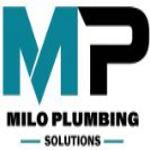Healthcare Worker Visa Australia: Pathways, Requirements & Opportunities
Australia's healthcare system relies heavily on skilled professionals—and with ongoing shortages in the sector, there are strong visa pathways for international healthcare workers. If you’re a nurse, doctor, allied health professional, or aged care worker, understanding your options for a healthcare worker visa Australia is the first step to starting your career down under.
In this blog, we’ll cover the types of visas available, eligibility criteria, and how you can get sponsored to work in Australia’s healthcare system.
Why Australia Needs International Healthcare Workers
With an ageing population, increased demand for services, and regional healthcare gaps, Australia is actively recruiting skilled workers in roles such as:
Registered Nurses
General Practitioners
Specialists (e.g., psychiatrists, anaesthetists)
Aged and Disability Carers
Allied Health Professionals (e.g., physiotherapists, radiographers)
Healthcare roles are consistently listed on Australia’s Skilled Occupation List (SOL) and Priority Migration Skilled Occupation List (PMSOL)—making it easier for qualified workers to obtain a visa.
Visa Options for Healthcare Workers in Australia
1. Temporary Skill Shortage Visa (Subclass 482)
The TSS visa allows Australian employers to sponsor overseas healthcare workers.
Duration: Up to 4 years
Eligible occupations: Nurses, GPs, medical officers, aged care workers
Pathway to PR: Yes, via the Subclass 186 visa
Requirement: Job offer from a sponsoring employer
2. Skilled Independent Visa (Subclass 189)
This is a points-tested permanent residency visa for skilled professionals without employer sponsorship.
No sponsor needed
Must submit an Expression of Interest (EOI) via SkillSelect
High competition – must have occupation on the Medium and Long-term Strategic Skills List (MLTSSL)
3. Skilled Nominated Visa (Subclass 190)
A state-sponsored PR visa, ideal for healthcare workers willing to settle in a specific state or territory.
Requires nomination by a state or territory
Points-based
Faster processing times for in-demand healthcare roles
4. Skilled Work Regional Visa (Subclass 491)
Designed for workers who want to live and work in regional Australia.
Provisional visa (5 years)
Pathway to PR via Subclass 191
Requires state/territory or family nomination
5. Employer Nomination Scheme (Subclass 186)
For healthcare professionals already working in Australia on a TSS visa or those with a direct job offer.
Permanent residency
Employer must meet nomination criteria
Eligibility Criteria for Healthcare Worker Visas
To qualify for a healthcare worker visa, you typically need to:
Hold a recognized qualification in your field
Have relevant work experience (2+ years is often preferred)
Register with the relevant authority (e.g., AHPRA for nurses, doctors, midwives)
Meet English language requirements (IELTS, OET, etc.)
Pass health and character checks
Fast-Tracked Visas for Healthcare Workers
In response to COVID-19 and ongoing healthcare shortages, the Australian Government has prioritized processing for certain healthcare occupations. These include:
Registered Nurses
General Practitioners
Mental Health Professionals
Disability Support Workers
Aged Care Workers
If your occupation is listed on the Priority Migration Skilled Occupation List (PMSOL), your visa may be expedited.
Steps to Apply for a Healthcare Worker Visa
Check your occupation on the Skilled Occupation List
Get skills assessed by the relevant authority
Register with AHPRA or relevant medical board
Secure a job offer or nomination (if required)
Submit your Expression of Interest (EOI) via SkillSelect
Apply for the visa when invited or nominated
Final Thoughts
Australia presents a wealth of opportunities for international healthcare professionals. Whether you're looking for a temporary role, regional experience, or a permanent move, the healthcare worker visa Australia system provides flexible options. With the right qualifications and preparation, you can build a rewarding career while helping meet Australia’s growing healthcare needs.
https://jadeimmigrationlawyers.com.au/healthcare-worker-visa-australiaHealthcare Worker Visa Australia: Pathways, Requirements & Opportunities
Australia's healthcare system relies heavily on skilled professionals—and with ongoing shortages in the sector, there are strong visa pathways for international healthcare workers. If you’re a nurse, doctor, allied health professional, or aged care worker, understanding your options for a healthcare worker visa Australia is the first step to starting your career down under.
In this blog, we’ll cover the types of visas available, eligibility criteria, and how you can get sponsored to work in Australia’s healthcare system.
Why Australia Needs International Healthcare Workers
With an ageing population, increased demand for services, and regional healthcare gaps, Australia is actively recruiting skilled workers in roles such as:
Registered Nurses
General Practitioners
Specialists (e.g., psychiatrists, anaesthetists)
Aged and Disability Carers
Allied Health Professionals (e.g., physiotherapists, radiographers)
Healthcare roles are consistently listed on Australia’s Skilled Occupation List (SOL) and Priority Migration Skilled Occupation List (PMSOL)—making it easier for qualified workers to obtain a visa.
Visa Options for Healthcare Workers in Australia
1. Temporary Skill Shortage Visa (Subclass 482)
The TSS visa allows Australian employers to sponsor overseas healthcare workers.
Duration: Up to 4 years
Eligible occupations: Nurses, GPs, medical officers, aged care workers
Pathway to PR: Yes, via the Subclass 186 visa
Requirement: Job offer from a sponsoring employer
2. Skilled Independent Visa (Subclass 189)
This is a points-tested permanent residency visa for skilled professionals without employer sponsorship.
No sponsor needed
Must submit an Expression of Interest (EOI) via SkillSelect
High competition – must have occupation on the Medium and Long-term Strategic Skills List (MLTSSL)
3. Skilled Nominated Visa (Subclass 190)
A state-sponsored PR visa, ideal for healthcare workers willing to settle in a specific state or territory.
Requires nomination by a state or territory
Points-based
Faster processing times for in-demand healthcare roles
4. Skilled Work Regional Visa (Subclass 491)
Designed for workers who want to live and work in regional Australia.
Provisional visa (5 years)
Pathway to PR via Subclass 191
Requires state/territory or family nomination
5. Employer Nomination Scheme (Subclass 186)
For healthcare professionals already working in Australia on a TSS visa or those with a direct job offer.
Permanent residency
Employer must meet nomination criteria
Eligibility Criteria for Healthcare Worker Visas
To qualify for a healthcare worker visa, you typically need to:
Hold a recognized qualification in your field
Have relevant work experience (2+ years is often preferred)
Register with the relevant authority (e.g., AHPRA for nurses, doctors, midwives)
Meet English language requirements (IELTS, OET, etc.)
Pass health and character checks
Fast-Tracked Visas for Healthcare Workers
In response to COVID-19 and ongoing healthcare shortages, the Australian Government has prioritized processing for certain healthcare occupations. These include:
Registered Nurses
General Practitioners
Mental Health Professionals
Disability Support Workers
Aged Care Workers
If your occupation is listed on the Priority Migration Skilled Occupation List (PMSOL), your visa may be expedited.
Steps to Apply for a Healthcare Worker Visa
Check your occupation on the Skilled Occupation List
Get skills assessed by the relevant authority
Register with AHPRA or relevant medical board
Secure a job offer or nomination (if required)
Submit your Expression of Interest (EOI) via SkillSelect
Apply for the visa when invited or nominated
Final Thoughts
Australia presents a wealth of opportunities for international healthcare professionals. Whether you're looking for a temporary role, regional experience, or a permanent move, the healthcare worker visa Australia system provides flexible options. With the right qualifications and preparation, you can build a rewarding career while helping meet Australia’s growing healthcare needs.
https://jadeimmigrationlawyers.com.au/healthcare-worker-visa-australia


